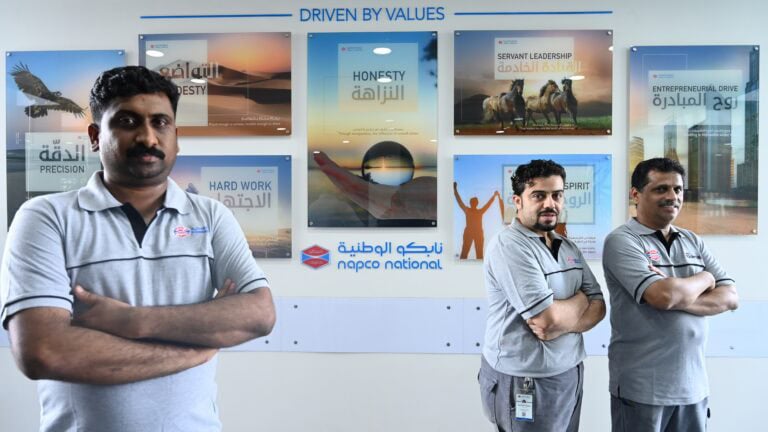Effective Strategies for Developing Women's Leadership in GCC Organizations


Jana Saab
The tides are turning in the GCC region. Women are making incredible strides in education, entering the workforce in impressive numbers, and their hunger for leadership roles is undeniable. But for many, the path to the top still faces cultural hurdles and unspoken barriers.
This is where fostering a work culture that empowers women to prosper becomes crucial. According to Certified™ organizations, such cultures are essential for closing the gender gap in leadership positions. “We see gender gaps decrease at great companies because they’re creating great cultures for all employees,” said Michael C. Bush, CEO of Great Place To Work®.
It is estimated that companies with a higher percentage of women in leadership positions demonstrate:
- 21% higher profitability
- Increased innovation
- Improved decision-making
Therefore, women can be change-makers and successful leaders.
Here are the most effective ways to develop women’s leadership in GCC organizations.
Overcoming unconscious bias to achieve fairness
Reducing unconscious bias offers women equal leadership roles. It also leads to less gender discrimination in the workplace. Offering unconscious bias training sessions for leaders and employees helps in developing a more inclusive work environment. Moreover, following systematic hiring processes and diverse interviews can provide objective candidate evaluations and a variety of viewpoints.
Including women in leadership allows sharing a wide range of diverse ideas as well. When considering this point, women can be representatives, have a voice, and a role in taking decisions. They can create new ideas to drive innovation. This cultivates a sense of appreciation, satisfaction, and engagement.
It is stated that 90% of the organizations in the Best Workplaces for Women™ have reduced gender bias, where all men and women are treated equally.

Implementing mentorship and sponsorship programs
Mentorship offers guidance and encouragement by assisting women in overcoming obstacles at work and developing critical leadership skills. Mentors’ experiences inspire women in leadership roles. In this case, they can extend their professional networks while pursuing new opportunities by being introduced to important people both inside and outside the company. They support women in making accurate job decisions by helping them set goals for their careers, build plans for their growth, and offer feedback.
In addition to the mentors, sponsors actively champion women for leadership roles by securing high-profile projects, boosting visibility for senior leaders, and advocating for their promotions. This creates a powerful network for women, equipping them with the experience and exposure crucial for leadership development. It’s a win-win: women gain a fast track to leadership, and organizations cultivate a strong pipeline of future leaders.
Hence, by offering women leadership roles, this increases their visibility. They also have high chances for training and development opportunities.
Encouraging flexible work arrangements
Offering flexible work options, such as remote work or part-time schedules, empowers women to pursue leadership roles in the workplace. This flexibility allows them to manage their demanding schedules effectively, leading to a more focused and impactful leadership style. Studies have shown that flexible work arrangements can boost employee retention by 30% and increase productivity by 20-35%. This creates a win-win situation where women can achieve a healthy work-life balance while reaching their leadership potential, and organizations benefit from a more loyal, productive workforce.
Highlighting role models and visibility
Featuring other women in leadership positions is a powerful motivator for aspiring female leaders. These role models provide a clear path to success within the organization, demonstrating that leadership is attainable for women. Furthermore, a visible presence of women throughout the company sends a strong message of gender diversity and inclusion. Those visible women can also become mentors and sponsors, actively supporting the growth and advancement of other women in the workplace. This creates a ripple effect, fostering a culture that empowers women to reach their full leadership potential.
Who are the Best Workplaces for Women™?
The success of your business is inextricably connected with the advancement of women in leadership. The Best Workplaces for Women™ list highlights those esteemed organizations that are fostering a culture of empowerment and equality, but recognition is just the first step.
Here’s how you can take action:
- Familiarize yourself with our Best Workplaces for Women™ list. Identify the key factors that set apart companies known for supporting their woman employees.
- Assess your own company culture. Identify areas where you can strengthen support for women in leadership within your organization.
- Develop and implement an action plan. Organizations can achieve that through integrating mentorship programs, leadership training for women, or flexible work arrangements.
By taking practical steps, you can create a workplace where women can thrive, and your business can reap the benefits of a diverse and empowered workforce.
Get your company Certified™️

What Makes Napco a Great Place To Work®? It Starts with Family Spirit and Ends with Impact
What Makes Napco a Great Place To Work®? It Starts with Family Spirit and Ends with Impact About Napco National Napco National has been part of the Saudi industrial landscape since 1956,

9 High-Trust Leadership Behaviors That Build Great Workplaces
Caring, Celebrating, Developing, Employee Experience, Hiring, High-trust leadership, Inspiring, Leadership & Management, Listening, Managerial Communication, Sharing, Speaking, Thanking Every employee should take these behaviors to heart whether or not they are people leaders. I often get asked

The Evolution of Workplace Culture: Why It Matters More Than Ever in 2025
One universal workplace experience is the emotional imprint left by an organization—its energy, trust, and sense of belonging. Although experts may agree on what constitutes

How Purunity Embeds Goodness into Work and Culture
People go where there is pride in the work they do. At Purunity, this sense of pride stems from our core mission: driving innovative and

Powerful Strategies to Cultivate DEI in Omani Workplaces
DEI is not only a buzzword! Developing a diverse, equitable, and inclusive work environment shows that leaders care about their employees, appreciate, and respect their

4 Strategies to Promote Resilience in UAE Workplaces
Cultivating resilience in the workplace is the key to empowering employees and boosting their confidence. It is important for both employees and their leaders. Resilience
